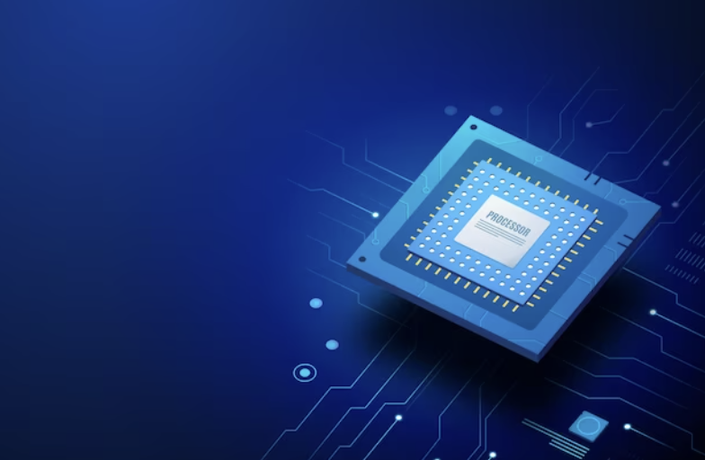
Embedded Display Drivers Development: A Bare-Metal Approach
From Fundamentals to Hands-On with LCD, TFT, OLED, Dot Matrix, Addressable LEDs, and 7/8 Segment
Watch Promo
Unlock the full potential of your embedded systems with our comprehensive Embedded Systems Display Drivers course.
In this in-depth, hands-on course, you'll learn the essential concepts and techniques for developing display drivers for a wide range of applications, from simple 7/8 segment displays to advanced OLEDs and TFTs.
Our expert instructor will guide you through the key technologies and programming techniques, using a combination of lectures, exercises, and real-world examples, so you can gain a deep understanding of the theory and practice of display driver development.
With source code for STM32 microcontrollers and best practices followed, you'll be ready to tackle many display driver projects.
With the flexible online format, you can study at your own pace, from anywhere in the world. Plus, we offer a 30-day money-back guarantee, so you can enroll with confidence.
Here's a sneak peek at what you can expect to learn:
- Introduction to Embedded Systems Graphics: Dive into the world of embedded systems graphics and learn about the different types of displays, their characteristics, and design considerations. Discover the many applications of embedded displays and how to choose the best display for your project.
- The 7/8 Segment Display: Learn the basics of 7/8 segment displays, including how to drive them with the STM32F4 microcontroller and programming techniques for creating interactive displays. Get hands-on experience with example code and programming exercises.
- WS2812 Addressable LEDs: Discover the world of addressable LEDs and learn how to drive them with the STM32F4 microcontroller. Explore programming techniques and create interactive lighting effects with hands-on exercises and example code.
- Dot Matrix Displays: Learn the basics of dot matrix displays, including how to drive them with the STM32F4 microcontroller and programming techniques for creating interactive displays. Get hands-on experience with example code and programming exercises.
- LCD Displays: Learn the basics of LCD displays, including how to drive them with the STM32F4 microcontroller and programming techniques for creating interactive displays. Get hands-on experience with example code and programming exercises.
- TFT Displays: Learn about TFT displays with ST7735 controllers and how to drive them with the STM32F4 microcontroller. Explore programming techniques and create interactive graphics with hands-on exercises and example code.
- OLED Displays: Learn about OLED displays and how to drive them with the STM32F4 microcontroller. Explore programming techniques and create interactive graphics with hands-on exercises and example code.
- Advanced Display Techniques: Learn about advanced techniques for improving display performance and reliability, including advanced programming techniques for displays using the STM32F4 and troubleshooting and debugging display issues.
- Future Directions in Embedded Systems Graphics: Discover emerging technologies and trends in embedded systems graphics, and explore potential future applications and challenges in this field.
Don't miss out on this opportunity to advance your career - enroll now!
Frequently Asked Questions
Course Curriculum
-
StartImportant information about this section
-
StartProgramming : Enabling the Floating Point Unit (FPU) (18:00)
-
StartProgramming : Developing a UART Driver - Analyzing the Documentation (11:35)
-
StartProgramming : Developing a UART Driver - Listing out the steps (4:00)
-
StartProgramming : Developing a UART Driver - Implementing the Init. function (22:13)
-
StartProgramming : Developing a UART Driver - Implementing the Write function (5:39)
-
StartProgramming : Developing a UART Driver - Testing the Driver (6:39)
-
StartProgramming : Developing the System Timebase - Analyzing the Documentation (8:28)
-
StartProgramming : Developing the System Timebase - Implementing the Init. function (9:52)
-
StartProgramming : Developing the System Timebase - The rest of the functions (12:15)
-
StartProgramming : Developing the System Timebase - Testing the Timebase (5:34)
-
StartProgramming : BSP : Listing the out the Required Functions (7:55)
-
StartProgramming : Writing the LED Driver (5:01)
-
StartProgramming : Writing the PushButton Driver (4:00)
-
StartProgramming : Testing the Board Support Package (3:35)
-
StartProgramming : Analyzing the Documentation (5:21)
-
StartProgramming : Listing out the steps for developing the ADC Driver (5:27)
-
StartProgramming : Writing the ADC Initialization function (13:21)
-
StartProgramming : Writing the ADC Read function (14:05)
-
StartProgramming : Analyzing the Documentation for the SPI Driver (7:34)
-
StartProgramming : Intializing the GPIO Pins for SPI (11:00)
-
StartProgramming : Implementaing Structures for Configruation Parameters (15:29)
-
StartProgramming : Configuring the Parameters (15:41)
-
StartProgramming : Writing the SPI Initialization function (14:55)
-
StartProgramming : Writing the SPI Transmit Function (Pt.1) (9:27)
-
StartProgramming : Writing the SPI Transmit Function (Pt.2) (10:26)
-
StartProgramming : Transmitting 16-bit Data (17:54)
-
StartProgramming : Transmitting 8-bit Data (6:46)
-
StartProgramming : Receiving Data (11:05)
-
StartProgramming : Testing the SPI Driver (15:47)
-
StartProgramming : Analyzing the Documentation for the I2C Driver (10:47)
-
StartProgramming : I2C : The GPIO Initialization (10:35)
-
StartProgramming : Configuring the I2C Parameters (10:22)
-
StartProgramming : Implementing the I2C Read function (13:44)
-
StartProgramming : Implementing the I2C Burst Read function (7:25)
-
StartProgramming : Implementing the I2C Write functions (10:17)
Your Instructor
EmbeddedExpertIO represents a vibrant collective dedicated to the mastery of sophisticated embedded systems software development for professionals.
Our core objective is to equip individuals and organizations with the indispensable skills to thrive in the swiftly evolving embedded systems sector. We achieve this by providing immersive, hands-on education under the guidance of seasoned industry specialists. Our ambition is to emerge as the favored learning platform for embedded systems development professionals across the globe.
